No doubt sitting in front of a computer for eight-plus hours a day can take its toll on your health. If your work is desk-bound, then you probably know that taking regular breaks and working out in your free time is just not enough to make the discomfort go away. Additionally, muscle tightness, low backaches and knee and wrist pain are also very common.

Luckily, with the help of ergonomic accessories, you can make your working environment more comfortable, protect your health and reduce stress. And one of the best office accessories you can get is the ergonomic keyword. Although it was invented back in the ’90s, its benefits have become more popular in recent years.
What Does Ergonomic Keyboard Mean?
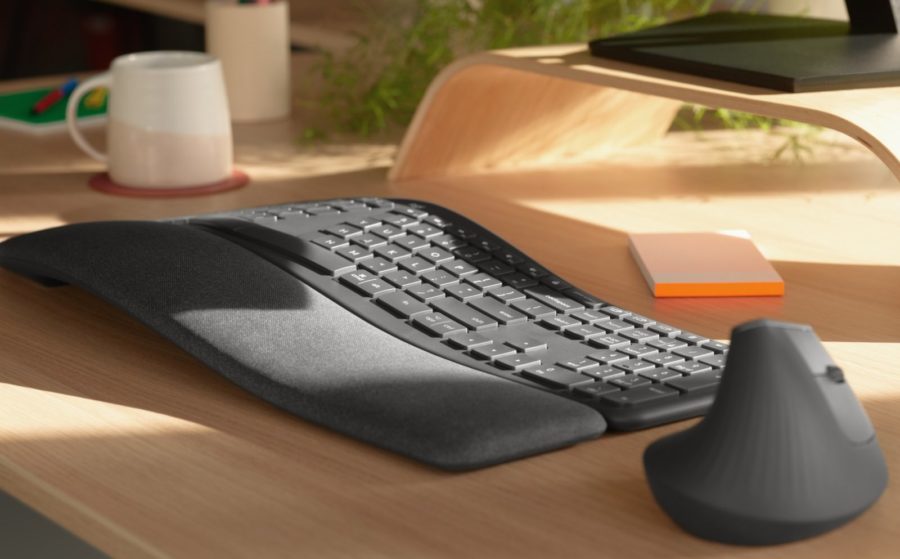
These keyboards serve the same purpose as the standard keywords (typing), with the one difference that they are specially designed to promote productivity and reduce fatigue while working. Today, you can find a variety of innovative keyboard ergonomics models for computers, tablets or smartphones and stop sacrificing comfort when typing. They are designed to mitigate the damage that using a keyboard does to your hands, wrists, and shoulders after years of daily use.
Benefits of Ergonomic Keyboards
Easy to Use
All keys on the ergo keyboards are positioned for symmetry of reach for all your fingers. The split models come with up to three programmable layers, so you can personalise the fit that suits you better. Many models connect via BlueTooth, which makes the installing process pretty easy too.
Reduces Stress
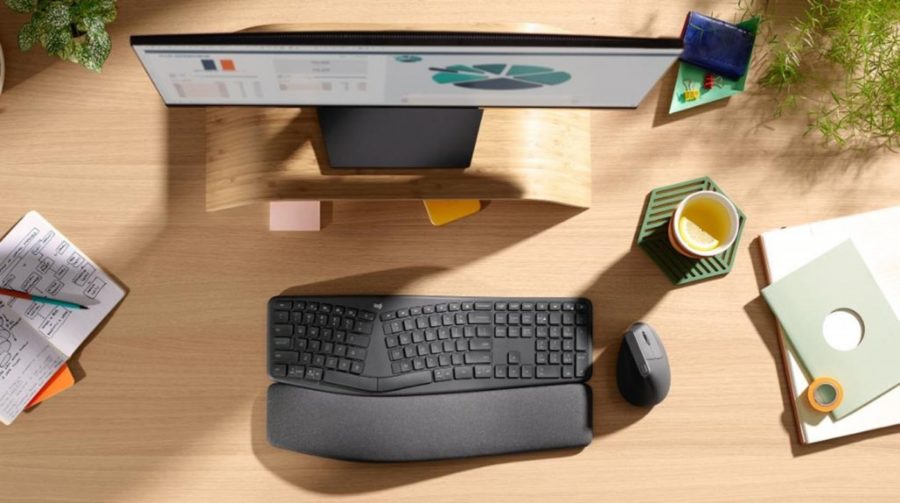
Reliable studies show that up to 12% of workers are experiencing stress and discomfort at work due to hand and wrist pain. Since the ergonomic keyboard helps you work in a more relaxed position, the stress associated with wrist pain and discomfort may be significantly reduced.
Health Benefits
Investing in an ergo keyboard is more than just a technical upgrade – it’s an investment in your health. Some of the health benefits of proper keyboard ergonomics are the following:
- It reduces the risk of carpal tunnel syndrome which occurs as a result of pinching a nerve in your wrist and leads to numbness in your fingers and sometimes your whole hand.
- It supports healthy posture. By properly placing your wrists on the keyboard, you encourage proper shoulder alignment, which trickles down to proper positioning of your whole body.
- It prevents typing injuries. A repetitive strain injury (RSI) can occur when you perform the same uncomfortable movement over and over, resulting in damage in your hands, wrists and arms. Without treatment, the symptoms can get worse and cause longer periods of pain.
Increases Typing Speed
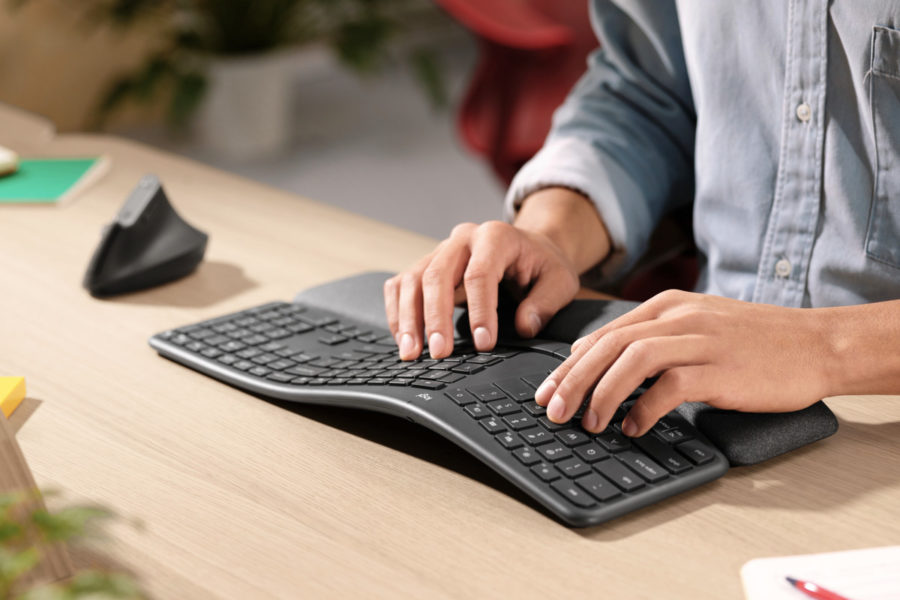
Since you’re typing in a more natural and relaxed way, your typing speed may improve. Ergonomic keyboards that feature dedicated function keys for Office 365, emojis, search and easy access to control media make typing easier and quicker. The more time you spend on your ergonomic keyboard, the more you can adapt to using it. Moreover, with a relaxed wrist and comfortable finger positioning, you can work for longer and accomplish more tasks, hence improving your productivity at work.
Another great advantage of ergonomic keyboards is that they are made to respond quickly to touch. This means that the keyboard keys only need a light touch to respond, which also increase typing speed.
What Is the Ideal Typing Posture?

If the keyboard is too low, you’ll have to compensate by bending your wrists upward. If the keyboard is too high, you’ll have to compensate by raising your shoulders to elevate your arms. To get the ideal position, you need to adjust your office chair so that your elbows are at about the same height as the keyboard and your shoulders are relaxed. Your wrists should be in a neutral posture.
Types of Ergonomic Keyboards
Keyword ergonomics models are extremely versatile and come in many designs and shapes. Most commonly, they are separated into three types depending on their shape. Depending on your work responsibilities, you may find that some keyboards are a better solution than others.
Contoured Keyboard
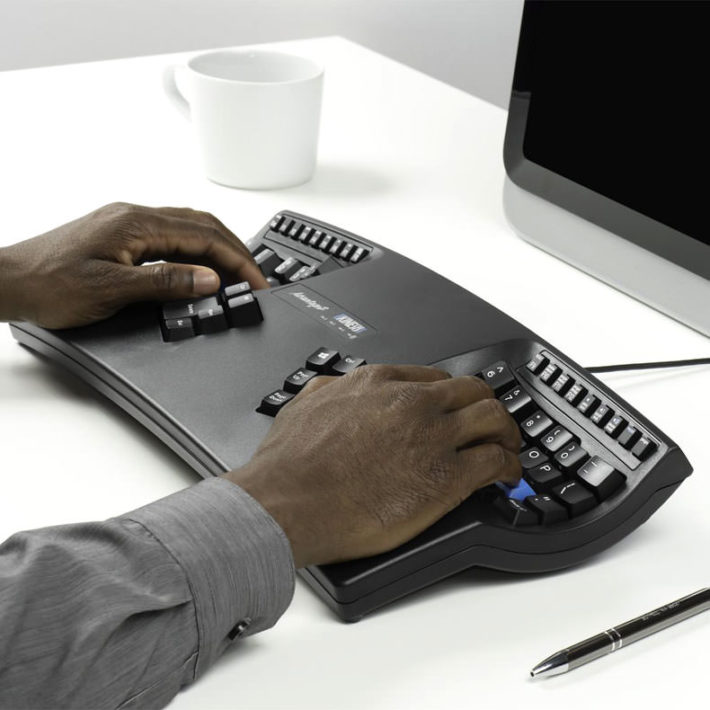
These keyboards are shaped as waves or domes, helping you to position your hands more naturally while typing. Typically, this ergonomically designed keyword is intended for use by two-hands typers, constructed with a split keyboard in a V shape.
The natural arc keyboard layout follows the curve of your fingertips for a more natural way of typing. Reverse tilt design positions the keyboard at the correct angle to give you a straight, neutral wrist position.
These ergo keywords also come with a well-padded wrist rest. The improved cushioned palm rest and dedicated shortcut keys allow you to rest your palms more naturally and use it with ease. Unibody models are curved to reduce wrist-twisting and include other features to reduce the impact on your arms.
Split Keyboard
Also known as freedom keywords, these split-chassis models can physically separate into two adjustable halves. This keyboard integrates effective and innovative ergonomic solutions into a premium mechanical, split, and programmable keyboard to solve your typing related pain. It helps with comfort, provides easy flow and proper spacing when typing. A split keyword keyboard allows you to bring it closer to your body to correct your seating posture.
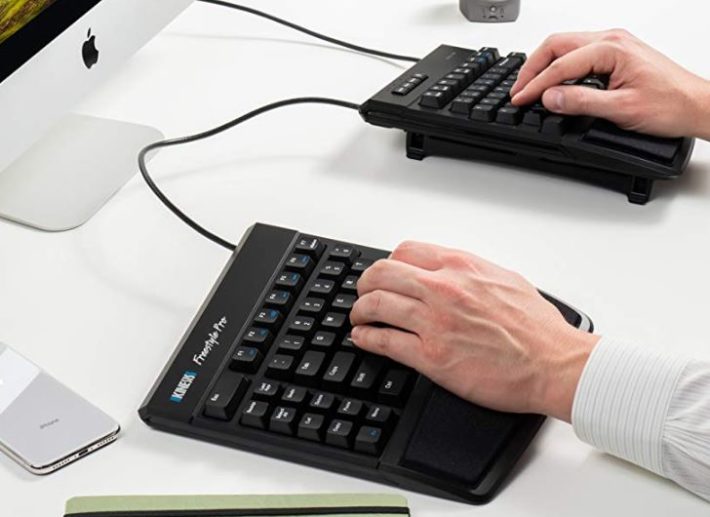
With the keyboard split into two halves, you control the width and the shape of the keyboard, so you can reposition it to fit your body. Some models feature additional accessories that you can attach easily to the base of the ergo keyboard, allowing quick and reproducible slope settings of 5, 10 and 15 degrees. Such accessories are left and right V-lifters, palm supports and replaceable padded palm pads. These accessories help ensures that wrists are neutral while resting.
Angled Keyboard
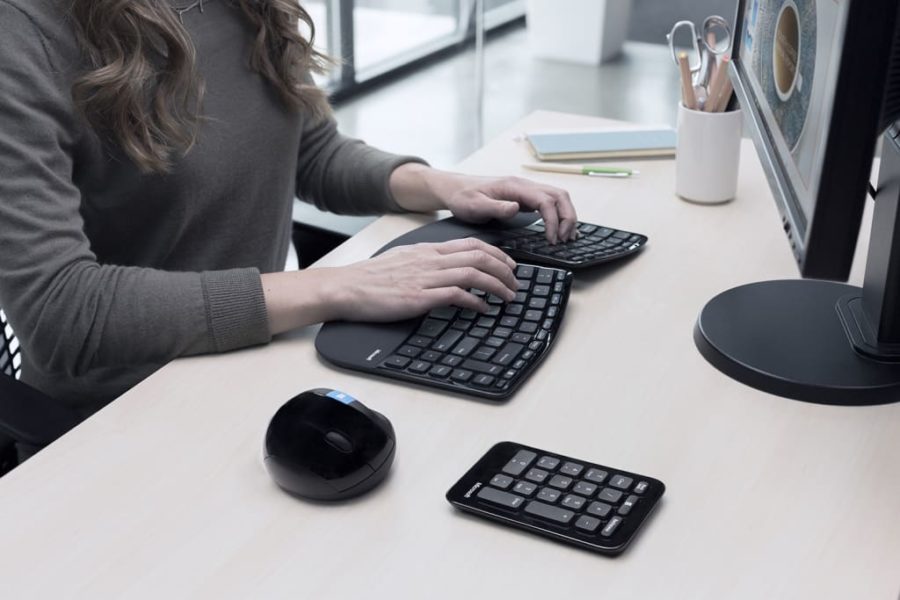
As the word suggests, angled keyboards are slightly inclined to promote proper wrist and hand placement when typing. Many find this position to be the most comfortable. Split keyboards can also be angled keyboards with the aid of accessories such as V-lifters.



